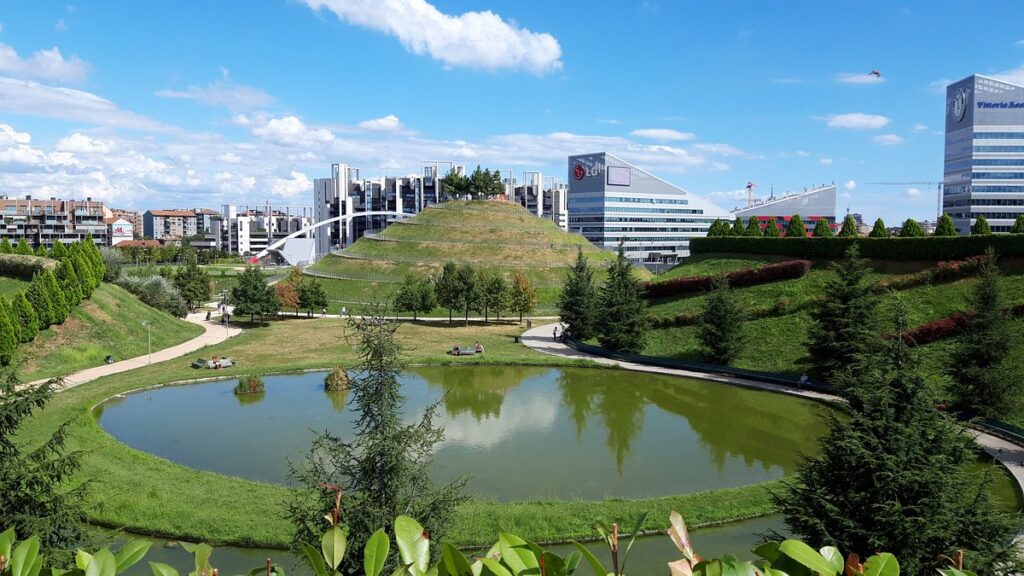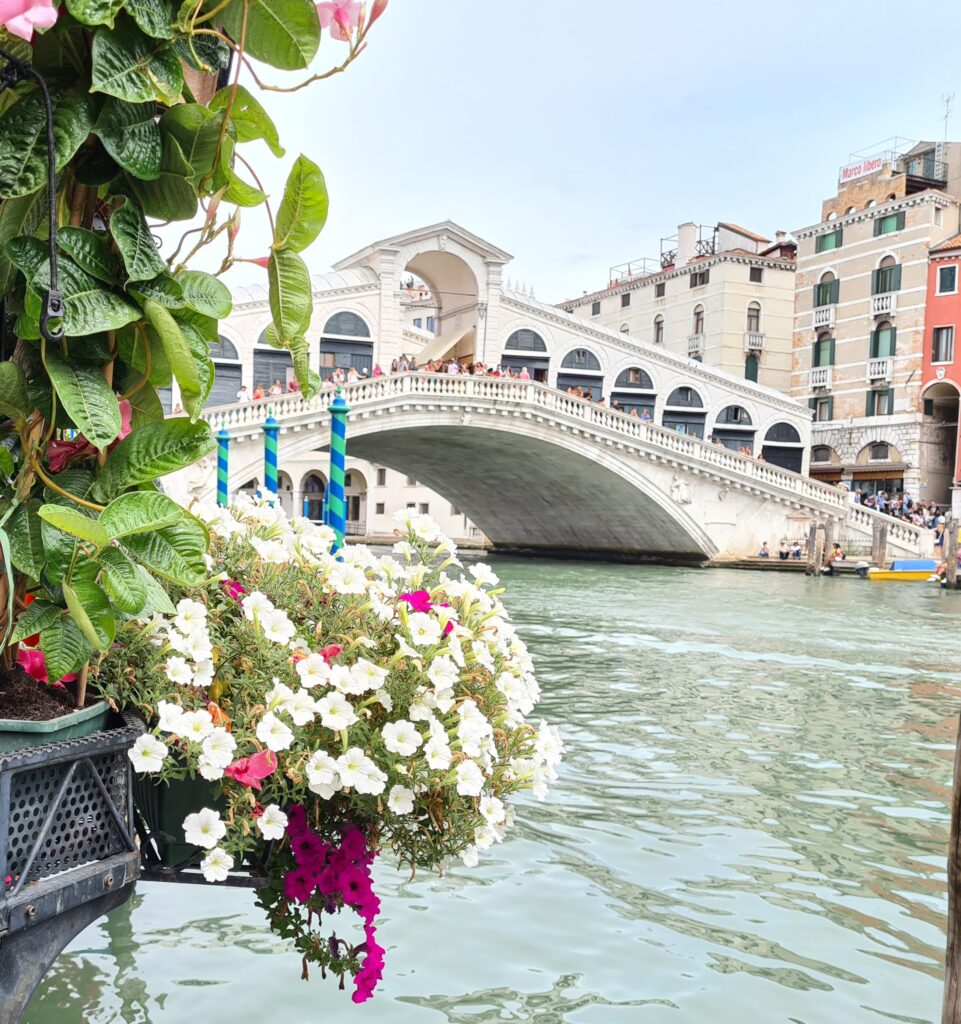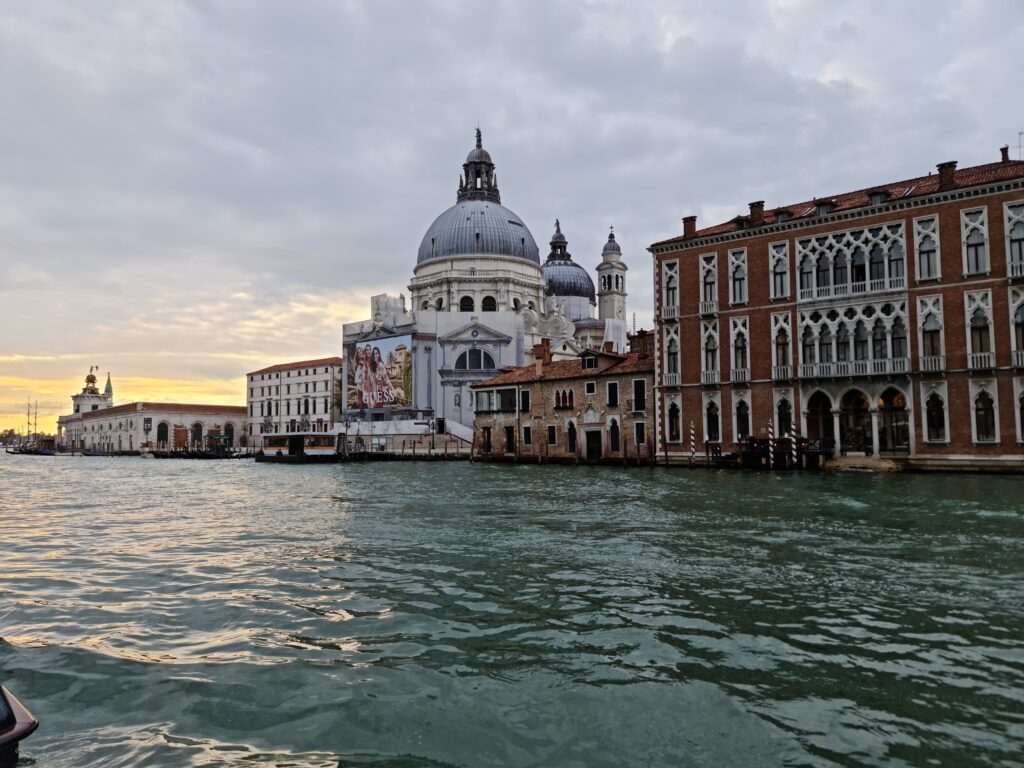Sicily is a Mediterranean jewel that boasts a spectacular array of landscapes, historical layers, and cultural treasures. As Italy’s largest island, it spans a vast area, making it impossible to see everything in just one week.
However, this challenge opens a wonderful opportunity: to delve deeply into either the eastern or western side of Sicily, uncovering rich experiences that go beyond surface-level tourism.
From the majestic smoke curling from Mount Etna’s summit to the well-preserved ancient Greek temples, from Baroque towns shimmering in golden sandstone to pristine beaches lapped by crystal-clear waters, Sicily offers an extraordinary diversity. The vibrant city markets burst with local life and flavors, while narrow medieval streets invite slow, contemplative strolls.
Choosing your base strategically—often between one or two key towns—can vastly enhance your journey, minimizing travel time and maximizing immersion.
In this itinerary, I will guide you through a perfectly paced seven-day exploration, blending seaside relaxation, archaeological wonders, hiking adventures, and culinary delights. Whether you prefer the historic grandeur of Palermo and its lively markets or the picturesque charm of Taormina overlooking the Ionian Sea, this plan is designed to ensure your first visit to Sicily is unforgettable, well-rounded, and deeply rewarding.
1. Exploring Palermo: Sicily’s Vibrant Capital
1.1 Palermo Cathedral and Norman Palace
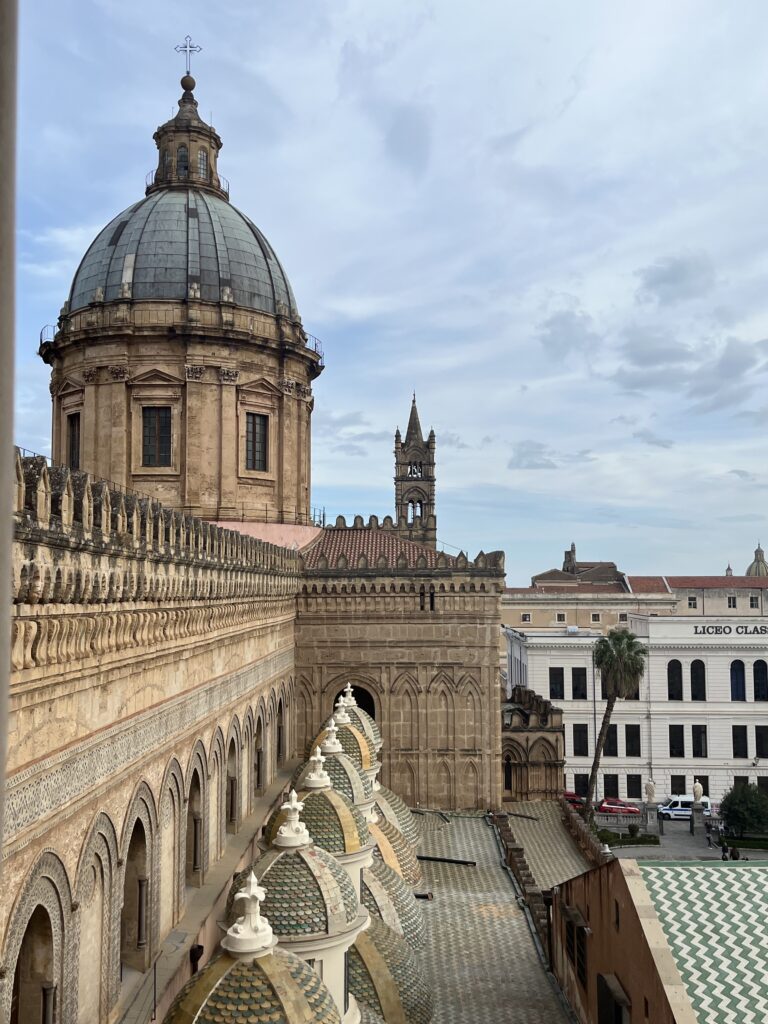
Palermo Cathedral is a magnificent testament to the island’s layered history, first constructed in the 12th century. Its architecture is a striking fusion of Norman, Arab, Byzantine, and Baroque styles, each addition reflecting the island’s diverse rulers.
The cathedral’s façade is adorned with a mix of Gothic and Romanesque elements, while the interior houses royal tombs and ornate chapels.
Nearby, the Norman Palace—also known as Palazzo dei Normanni—was the seat of the powerful Norman kings of Sicily. Its highlight is the Palatine Chapel, a dazzling jewel box of Byzantine mosaics depicting biblical scenes with incredible detail and vibrant colors.
The chapel’s intricate wooden ceiling is another remarkable feature that showcases Arab craftsmanship.
For visitors, the cathedral and palace are open daily, typically from early morning until early evening, with guided tours available for a deeper insight into the historical and artistic significance. The cathedral’s rooftop is accessible for a small fee, and climbing up provides panoramic views of Palermo’s rooftops and the surrounding cityscape, a must-do for photographers and history enthusiasts alike.
1.2 Quattro Canti and Piazza Pretoria
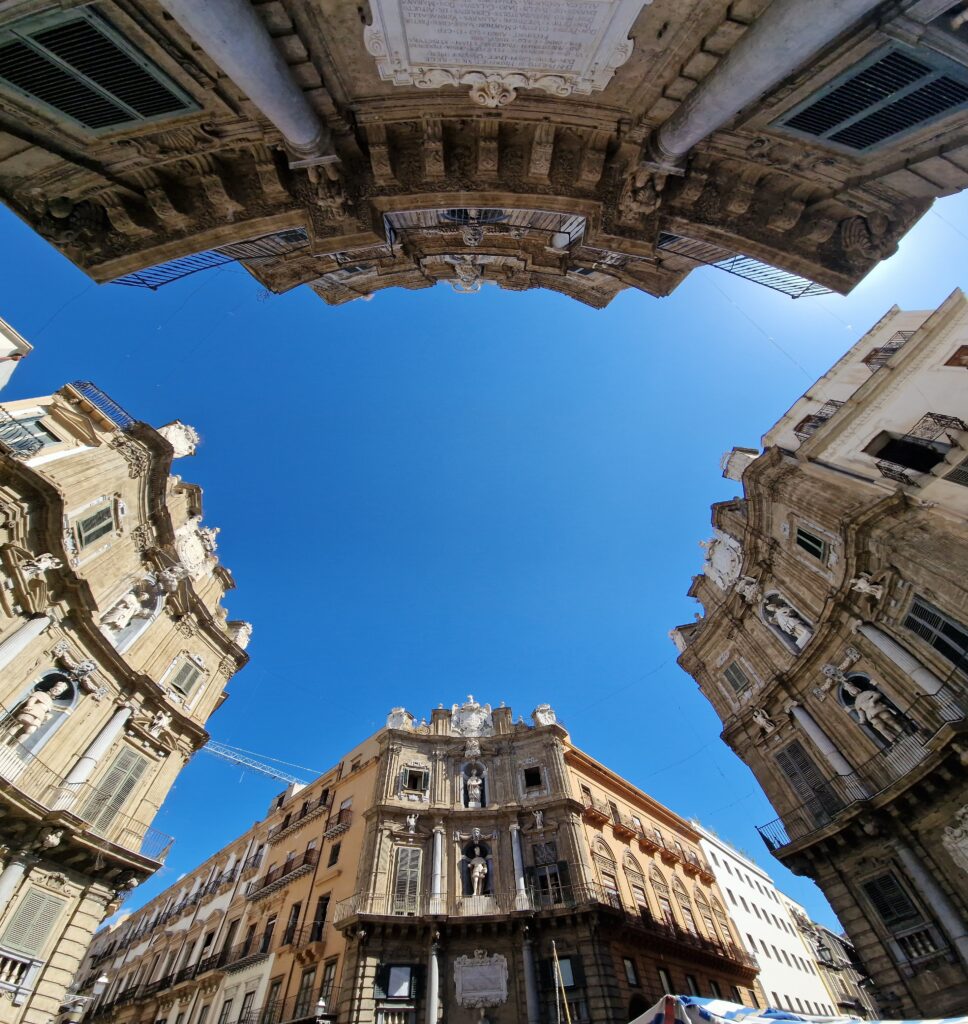
Quattro Canti, officially called Piazza Vigliena, is a Baroque masterpiece and the symbolic crossroads of Palermo’s historic center. Each corner of this octagonal square features symmetrical fountains and statues representing the four seasons, Spanish kings, and patron saints of Palermo’s four quarters.
The harmony and geometry of Quattro Canti create a theatrical open-air space that is both a navigational landmark and a photographic gem.
Just a short stroll away is Piazza Pretoria, famous for its “Fountain of Shame” due to the nude statues that adorn the large central fountain. This Renaissance fountain is a sculptural wonder, with intricate detailing of mythological figures, animals, and water nymphs.
Visiting early in the morning or late afternoon helps avoid crowds and captures the fountain in the best natural light for photography.
1.3 Palermo’s Historic Markets: Capo, Ballarò, Borgo Vecchio
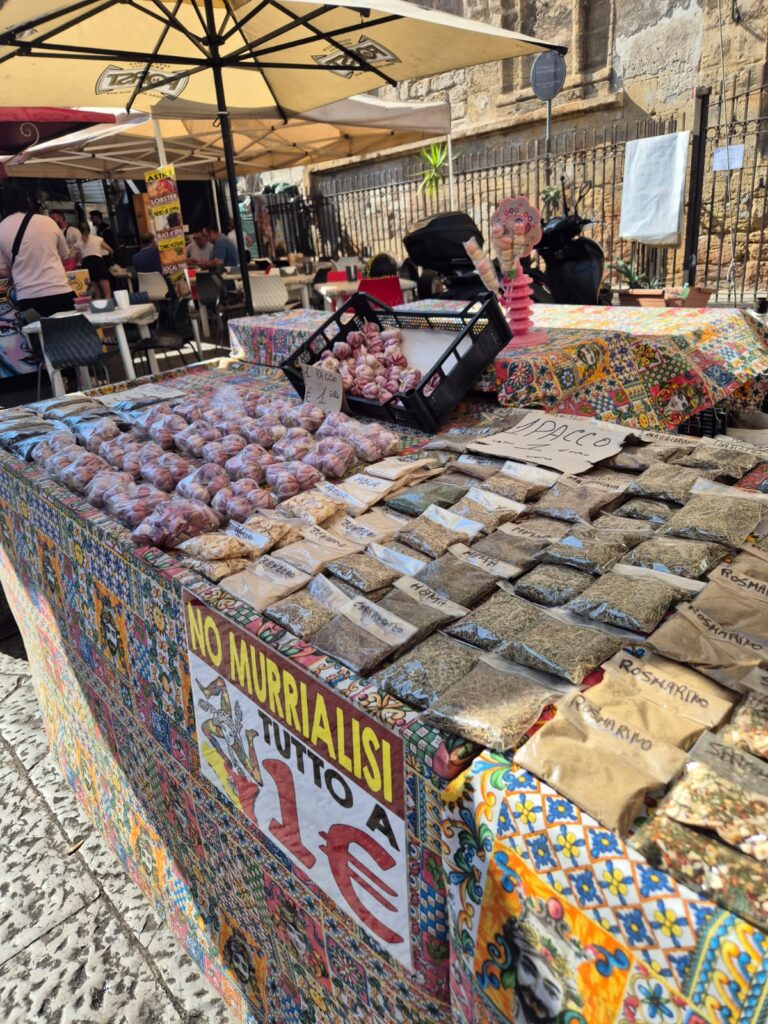
Palermo’s historic markets are vibrant hubs of local life, offering a sensory feast of colors, sounds, and aromas. The Capo market features fresh fruit, vegetables, fish, and bustling street food stalls.
Ballarò is the largest and oldest market, where vendors sell everything from spices to meats, and the local street food scene shines with specialties like arancini (fried rice balls), crocche (potato fritters), and pani ca meusa (spleen sandwiches).
Borgo Vecchio, near the port, is a more traditional market with a lively atmosphere, especially in the mornings. For visitors, the best way to experience these markets is either through a guided food tour that includes tastings or by following a self-guided route focusing on must-try items.
When visiting, be mindful of your belongings, use respectful bargaining, and embrace the social energy of the markets.
1.4 Massimo Theater and Palermo’s Cultural Scene
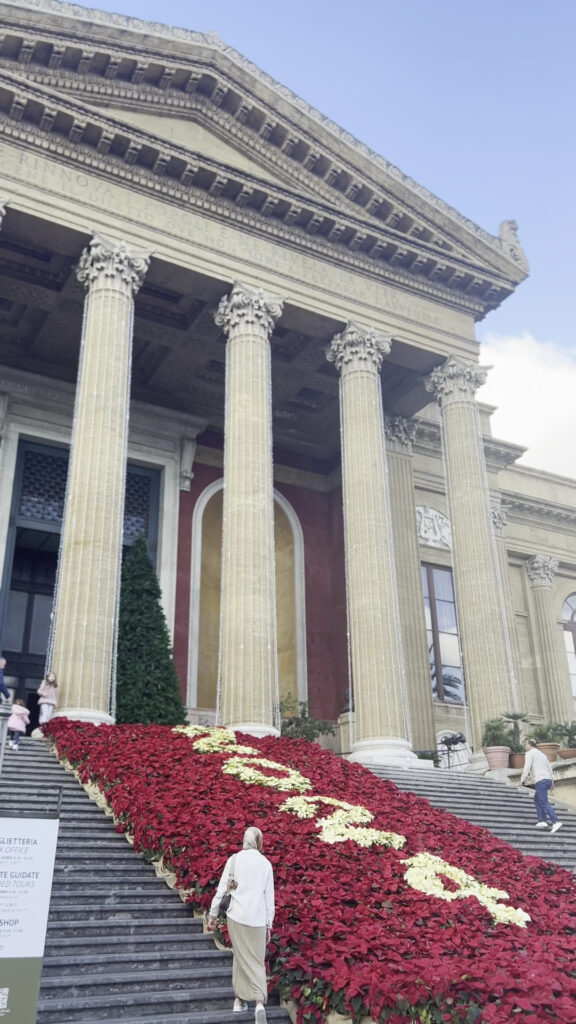
Teatro Massimo is one of Europe’s largest opera houses, renowned for its magnificent architecture and exceptional acoustics. Built in the late 19th century, the theater’s grand neoclassical façade and opulent interior showcase the artistic ambitions of Palermo’s cultural elite.
Attending an opera, ballet, or concert here is a highlight for culture lovers.
Tickets can be booked in advance, especially during the high season, and guided tours of the theater are available on most days. Beyond the opera, Palermo’s cultural scene includes many galleries, museums, and festivals, making evening exploration around the theater district a rewarding experience.
1.5 Catacombe dei Cappuccini
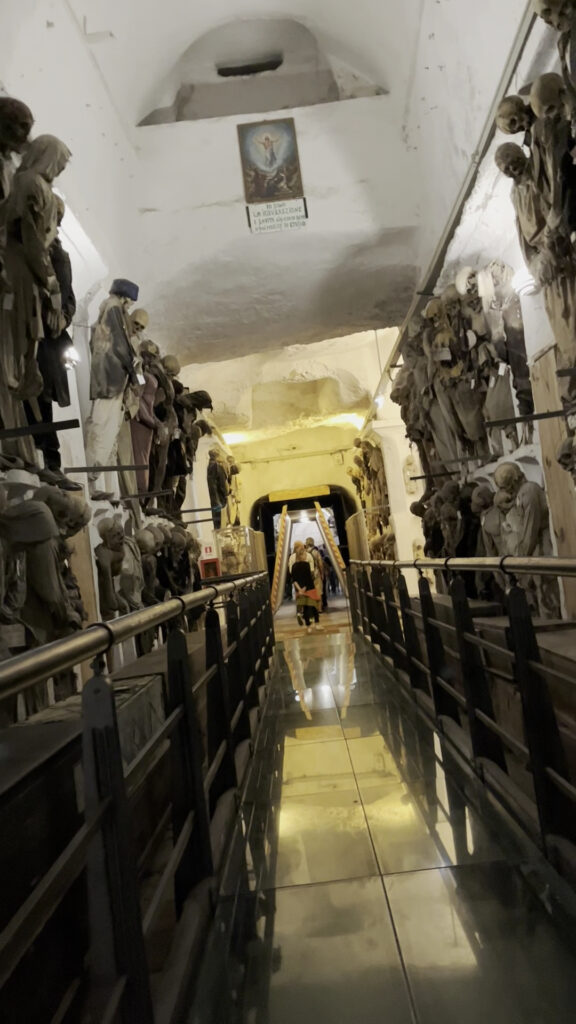
The Catacombe dei Cappuccini is a unique and somewhat macabre attraction featuring thousands of mummified bodies, many dressed in their finest attire, displayed in various states of preservation. This 16th-century burial site offers a stark glimpse into Sicilian attitudes toward death and remembrance.
Visitors should prepare for a solemn experience, and those less inclined may prefer to explore alternative cultural sites, such as the nearby museums or churches. The catacombs are open during regular hours with a modest entrance fee.
2. Coastal Escape to Cefalù: History and Mediterranean Beaches
2.1 Old Harbour and Beachfront Walks
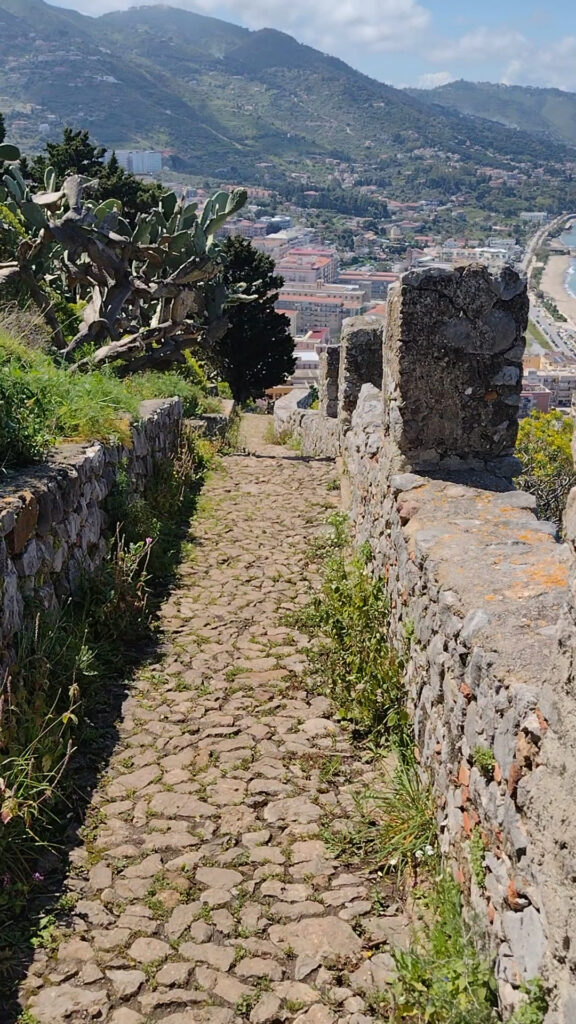
Cefalù is a picturesque coastal town famed for its postcard-perfect old harbor and sandy Mediterranean beach. The harbor is lined with colorful fishing boats and quaint cafes, creating a relaxed seaside vibe.
The wide sandy beach has excellent facilities for sunbathing and swimming, with crystal-clear waters ideal for cooling off during hot Sicilian days.
Visitors can stroll along the Lungomare, enjoying views of the sea and the dramatic cliffs behind the town. The beach area is family-friendly, with nearby amenities including showers, sunbeds, and eateries serving fresh seafood.
2.2 La Rocca Hike and Temple of Diana
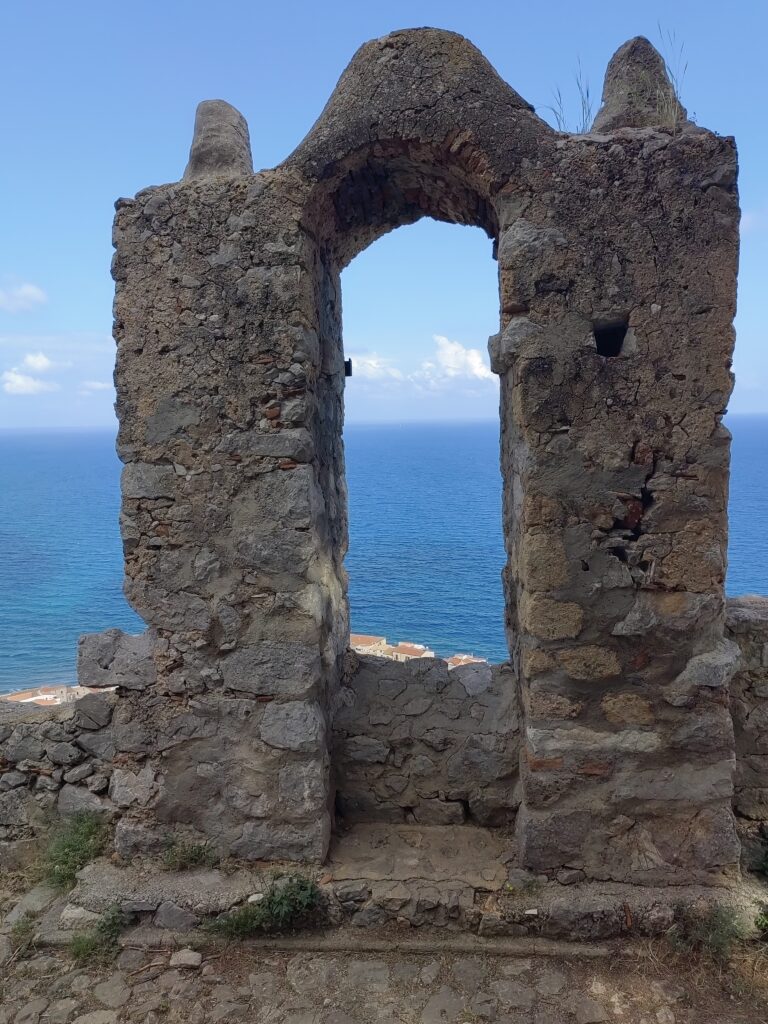
La Rocca is a towering rock formation overlooking Cefalù. The hike to its summit is a rewarding 268-meter ascent offering panoramic views of the town, coastline, and surrounding countryside.
Along the way, hikers can explore the remains of the 4th-century Temple of Diana, an ancient site with significant archaeological value.
For less active visitors, an electric shuttle operates to reduce the climb, and alternative easy walks around the base of La Rocca provide scenic vistas without the strenuous effort. The trail is best attempted early in the day to avoid heat and crowds.
2.3 Cefalù Cathedral and Mosaics
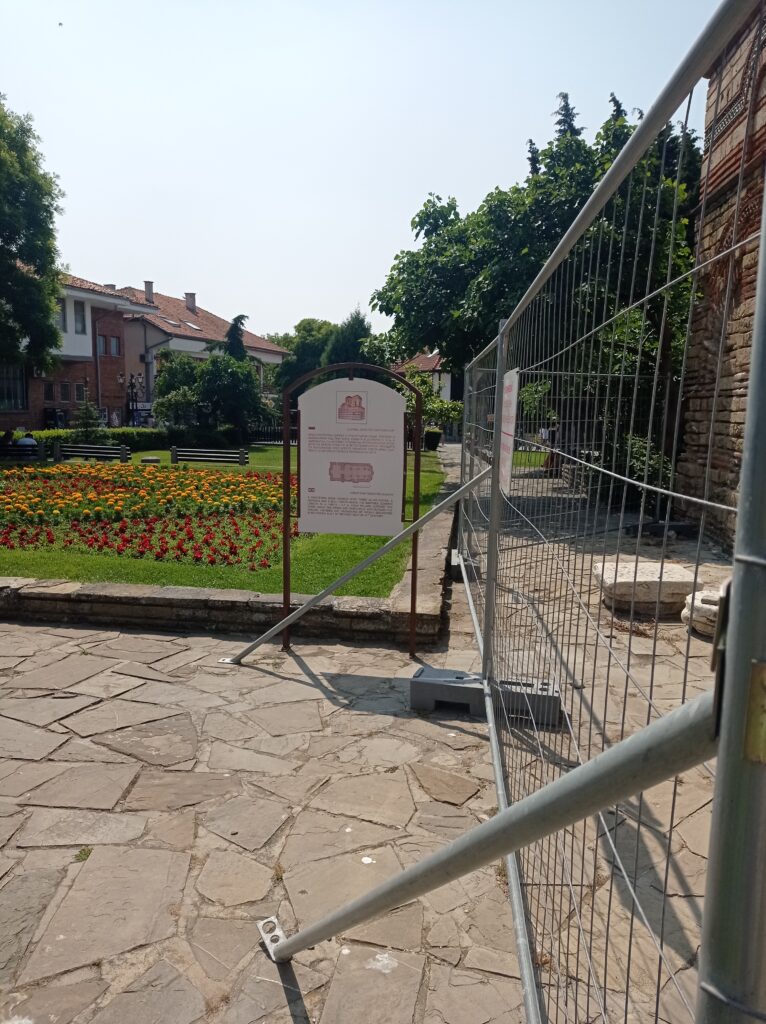
The Norman Cathedral of Cefalù, built in the 12th century, is a monumental example of Arab-Norman architecture on the island. Its interiors are adorned with extraordinary mosaics, most famously the Cristo Pantocratore, a large depiction of Christ in majestic gold and deep blues, considered one of the finest Byzantine mosaics in Italy.
The cathedral is open daily with an entrance fee supporting conservation efforts. Visitors should allocate at least an hour to fully appreciate the art and architecture, including the crypt and the chapels.
2.4 Dining and Gelato in Narrow Streets
Cefalù’s narrow medieval streets house numerous gelaterias offering authentic Sicilian gelato, with flavors like pistachio, lemon, and blood orange. Local eateries serve traditional dishes featuring fresh seafood, homemade pasta, and regional specialties.
For evening dining, several restaurants offer terraces with sea views, perfect for enjoying a Sicilian meal accompanied by the sunset. It’s advisable to book in advance during the busy summer months.
3. Taormina: Cultural Riches and Coastal Beauty
3.1 Ancient Greek Theatre (Teatro Antico di Taormina)
The Teatro Antico di Taormina, dating back to the 3rd century BCE, is an iconic archaeological site. This open-air Greco-Roman theater is remarkably well preserved and still hosts performances during summer festivals.
Its elevated position provides stunning views of Mount Etna and the Ionian Sea, making it a must-visit for both history buffs and photographers.
Tickets are available on-site or online, and visiting early in the day helps avoid crowds and heat. Guided tours provide insightful context about the theater’s historical and cultural significance.
3.2 Corso Umberto and Piazza IX Aprile
Corso Umberto is Taormina’s lively main pedestrian street, lined with boutiques, cafes, and artisan shops. It offers a delightful blend of historic charm and modern vibrancy.
At the heart of the town is Piazza IX Aprile, a terrace overlooking the sea with panoramic vistas and a photogenic clock tower.
Strolling Corso Umberto in the late afternoon is ideal for shopping and people-watching, while the piazza is a perfect spot for sunset views.
3.3 Cable Car to Beaches and Isola Bella
Taormina is perched on a hill with beaches below, accessible via a short cable car ride. The cable car runs frequently, providing easy access to the waterfront and beach clubs.
Just offshore is Isola Bella, a small island and nature reserve connected to the mainland by a narrow pebble beach.
Isola Bella offers opportunities for swimming, snorkeling, kayaking, and stand-up paddleboarding. Beach clubs provide sun loungers, umbrellas, and dining options, making it a comfortable place to relax after exploring the town.
3.4 Castelmola Day Trip
Castelmola is a charming hilltop village above Taormina, featuring Norman castle ruins and narrow cobbled streets. It offers breathtaking views over Taormina and the coast.
A highlight is Caffè San Giorgio, famous for its almond wine, a unique local specialty.
The village is accessible by car, local bus, or for the more active, a scenic 45-minute hike along the Sentiero dei Saraceni trail from Taormina’s center.
4. Mount Etna: Volcanic Adventure and Natural Wonders
4.1 Overview of Mount Etna’s Geology and Activity
Mount Etna is Europe’s tallest active volcano, dominating eastern Sicily’s skyline. Its frequent eruptions have shaped the island’s landscape and influenced local culture and agriculture.
The volcano rises over 3,300 meters above sea level, featuring multiple craters, lava fields, and geothermal activity.
Visiting Etna is best between May and September for favorable weather, though winter offers skiing on its slopes. The volcano’s dynamic nature means conditions can change rapidly, requiring flexibility in planning.
4.2 Hiking Trails and Cable Car Options
There are numerous hiking trails on Etna, ranging from easy walks to challenging summit treks. Popular routes include the Crateri Silvestri and the Valle del Bove rim.
For those who prefer less strenuous options, a cable car and 4×4 vehicles provide access to higher elevations. Guided tours enhance understanding of the volcanic landscape and its history.
Independent hikers should be well-prepared and aware of safety regulations, especially near active craters.
4.3 Safety and Preparation Tips
Visitors should bring sturdy footwear, layered clothing, sun protection, and ample water. Weather at high altitudes can be significantly cooler and windier than at sea level.
When driving down, use engine braking to avoid overheating brakes on steep descents. Pay attention to local warnings and volcanic activity updates.
4.4 Alternative Activities: Skiing, Wineries, and Local Experiences
In winter, Etna’s slopes offer skiing and snowboarding. Year-round, Etna’s fertile volcanic soils support vineyards producing distinctive wines; winery tours and tastings are popular.
Local folklore and festivals celebrate the volcano’s powerful presence in Sicilian life.
5. Catania: Black Baroque Architecture and Local Flavors
5.1 Piazza del Duomo and Lava Elephant Statue
Catania’s historic center revolves around Piazza del Duomo, featuring the imposing Baroque Catania Cathedral. The square’s centerpiece is the Fontana dell’Elefante, a lava stone statue of an elephant carrying an obelisk, symbolizing the city’s resilience and spirit.
The square is a hub of local life and architecture.
5.2 Ursino Castle and Benedictine Monastery
Ursino Castle, built in the 13th century by Emperor Frederick II, stands as a fortress and museum. Nearby, the Monastero dei Benedettini di San Nicolò l’Arena is one of Europe’s largest Benedictine monasteries, showcasing grand Baroque architecture and a peaceful cloister garden.
Guided tours reveal their rich histories and cultural importance.
5.3 La Pescheria Fish Market and Street Food
La Pescheria is Catania’s lively fish market, where vendors sell fresh catch daily. The market is a feast for the senses, with vibrant colors, smells, and sounds.
Nearby eateries serve freshly prepared seafood dishes, making it a perfect spot to sample authentic local flavors. Early morning visits offer the best experience.
5.4 Botanical Garden and Giardino Bellini
For a break from urban bustle, Catania’s Orto Botanico and Giardino Bellini offer serene green spaces. The botanical garden features diverse plant species, including rare Mediterranean flora.
Giardino Bellini is a historic park with fountains, sculptures, and walking paths perfect for a leisurely stroll.
6. Discovering Val di Noto: Baroque Heritage and Seaside Villages
6.1 Overview of the 1693 Earthquake and Baroque Rebuilding
After the devastating 1693 earthquake, the towns of Val di Noto were rebuilt in spectacular late Baroque style. This architectural renaissance created cohesive urban landscapes of ornate palaces, churches, and public squares, now recognized as a UNESCO World Heritage Site.
The region’s style is characterized by intricate stonework, dramatic facades, and elegant urban planning.
6.2 Noto: Cathedral, Caffè Sicilia, and Evening Strolls
Noto is the region’s architectural crown jewel, with its grand San Nicolò Cathedral dominating the skyline. The town’s wide streets and golden sandstone buildings glow warmly at sunset.
Caffè Sicilia is a renowned spot for artisan almond granita and pastries, a must-visit for food lovers. Evening strolls along Corso Vittorio Emanuele offer atmospheric views and vibrant local life.
6.3 Modica: Stoneground Chocolate and Historic Sites
Modica is famous for its unique chocolate, made using an ancient Aztec technique that creates a granular texture and intense flavor. The city’s Baroque center features the Duomo di San Giorgio and the rock-hewn San Nicolò Inferiore.
Visitors can tour chocolate shops like Antica Dolceria Bonajuto and savor local delicacies while exploring narrow alleys and historic sites.
6.4 Ragusa: Old Town (Ibla), Gardens, and Montalbano Tours
Ragusa Ibla is a picturesque Baroque town with cobblestone lanes, elegant palaces, and serene gardens such as Giardino Ibleo. It’s famous as a filming location for the TV series “Inspector Montalbano.” Walking tours guide visitors through its historic center, uncovering architectural gems and cinematic highlights.
Ragusa offers a quieter, authentic Sicilian atmosphere.
6.5 Marzamemi and Vendicari Nature Reserve
Marzamemi is a charming fishing village with colorful houses and a lively piazza, perfect for leisurely exploration and seafood dining. Nearby, Vendicari Nature Reserve offers pristine beaches, walking trails, and historic ruins.
It is a sanctuary for migratory birds and a great spot for swimming, snorkeling, and enjoying unspoiled coastal nature. Access by car is recommended for ease of travel.
7. Agrigento and the Valley of the Temples: Ancient Greek Splendor
7.1 Overview of the Archaeological Site
The Valley of the Temples is one of the world’s largest and most impressive archaeological sites, featuring well-preserved Greek temples such as Concordia and Juno. The site’s layout on a gentle hilltop provides stunning views amid ancient ruins.
Visitors can explore a 2-km route through temples, sanctuaries, and necropolises, often arriving early to avoid heat and crowds.
7.2 Kolymbethra Gardens and Local Flora
Within the archaeological park lies the Kolymbethra Gardens, a lush oasis of citrus, olive, and pomegranate trees. The garden provides a peaceful setting for picnics and nature walks, contrasting with the stark stone ruins nearby.
It represents the ancient Greek tradition of integrating nature and culture.
7.3 Agrigento Town: Medieval Center and Markets
Agrigento town offers a medieval center with narrow alleys, grand palaces, and the Cattedrale di San Gerlando, showcasing a blend of Arab-Norman, Gothic, Renaissance, and Baroque architecture. The weekly market is a lively place to sample local products and experience authentic Sicilian culture beyond the tourist sites.
7.4 Pietro Griffo Archaeological Museum
The Pietro Griffo Museum houses over 5,000 artifacts from the Valley of the Temples, including statues, pottery, and inscriptions. The museum provides comprehensive context for the ruins and is an essential stop for history enthusiasts.
Guided tours are available to enhance the experience.
8. Practical Travel Tips for One Week in Sicily
8.1 Transportation Options: Car Rental, Public Transport, and Tours
Renting a car is the most flexible way to explore Sicily, especially for reaching rural sites and remote beaches. Major airports offer numerous rental agencies, often bookable through platforms like Discover Cars.
Public transport—trains and buses—connect major cities but can be slow and infrequent to smaller towns. Guided tours provide convenient options for popular destinations without the need to drive.
| Transport Mode | Advantages | Disadvantages |
|---|---|---|
| Car Rental | Flexible schedule, access to remote areas, direct routes | Driving can be challenging, parking difficulties, ZTL zones |
| Public Transport | Cost-effective, no driving stress, environmentally friendly | Limited routes, slow, schedule-dependent |
| Guided Tours | Convenient, informative, no planning stress | Less flexibility, group pace |
8.2 Accommodation Strategies: Staying in One vs. Multiple Bases
Choosing one or two bases depends on your travel style and itinerary. Staying in one place reduces packing and transfers, ideal for a relaxed trip.
Two bases, such as Palermo and Taormina or Catania and Ortigia, allow deeper exploration of eastern and western Sicily while minimizing daily travel. Neighborhoods near historic centers offer walkability but may be noisier.
Rural or coastal stays provide tranquility but require transportation.
| Base Type | Advantages | Best For |
|---|---|---|
| Single Base | Less moving, more relaxation, cost-saving | Slow pace travelers, families |
| Two Bases | Broader exploration, less daily travel | Active travelers, first-timers wanting variety |
8.3 Best Times to Visit and Weather Considerations
Spring (April to June) and fall (September to October) are ideal for pleasant weather and fewer crowds. Summer months can be very hot and crowded, especially in July and August.
Winter is mild but some attractions and services may be limited. Coastal areas tend to be cooler than inland and volcanic regions like Etna.
8.4 Money, Safety, and Local Etiquette
Sicily uses the Euro. Cash is preferred in markets and small shops, though cards are widely accepted in cities.
Tipping is appreciated but not mandatory; small change to waiters or drivers is customary. Sicily is generally safe but usual precautions apply, especially in crowded markets.
Respect dress codes in churches (cover shoulders and knees) and always ask permission before photographing people.
9. Recommended Culinary Experiences and Local Specialties
9.1 Iconic Sicilian Street Foods: Arancini, Cannoli, Panelle
Sicilian street food is a highlight of any visit. Arancini are deep-fried rice balls stuffed with ragù, cheese, or peas.
Cannoli are crispy pastry tubes filled with sweet ricotta cream. Panelle are chickpea flour fritters, often served in sandwiches.
Regional variations abound, with some towns offering their own unique twists.
9.2 Must-Try Dishes in Each Region
| Region | Must-Try Dishes |
|---|---|
| Palermo | Pani ca meusa (spleen sandwich), Sfincione (Sicilian pizza) |
| Catania | Pasta alla Norma, Fresh seafood |
| Val di Noto | Almond granita, Modica chocolate |
9.3 Food Markets and Food Tours
Markets such as Ballarò and Vucciria in Palermo, and La Pescheria in Catania, are excellent places to sample street food and buy fresh produce. Guided food tours offer curated tastings and cultural insights, ideal for first-time visitors eager to discover authentic flavors safely and efficiently.
10. Optional Activities and Day Trips to Enhance Your Itinerary
10.1 Alcantara Gorge: Natural Canyons and River Walks
Alcantara Gorge is a natural volcanic canyon carved by the Alcantara River, featuring striking basalt rock formations. Visitors can hike along trails with views deep into the gorge.
Activities include river walks and body rafting during warmer months. The park has an entrance fee, with cheaper municipal access available nearby.
10.2 Aeolian Islands and Other Nearby Islands
The Aeolian Islands are a volcanic archipelago off Sicily’s north coast. Day trips by boat from Taormina or Milazzo allow exploration of islands like Lipari and Stromboli, known for their beaches, hiking, and volcanic activity.
Other nearby islands include Favignana and Pantelleria, each with unique landscapes and cultural offerings.
10.3 Cultural Events and Festivals
Sicily hosts many cultural events, especially in summer. Taormina’s ancient theater is a venue for concerts, opera, and festivals.
Local towns celebrate religious festivals with processions, traditional music, and food. Spring and fall offer quieter, more authentic experiences with fewer tourists.
10.4 Relaxed Beach Days and Lidos
For relaxation, visit family-friendly and less crowded beaches like San Vito Lo Capo, Marina di Ragusa, and Spiaggia di Calamosche in Vendicari Reserve. Beach clubs (lidos) provide amenities like sunbeds, umbrellas, and dining, offering a comfortable day by the sea.
Early booking is recommended in peak season.
Additional Sections
Sicily for Families: Kid-Friendly Activities and Accommodations
Sicily offers family-friendly beaches, interactive museums, and easy hikes suitable for children. Accommodations with pools, spacious apartments, and proximity to beaches are ideal.
Towns like Giardini Naxos and Cefalù provide safe, welcoming environments for families.
Sicilian Villas and Unique Stays: Where to Book for an Authentic Experience
Consider staying in traditional Sicilian villas, agriturismos, or boutique B&Bs for an authentic experience. These often include home-cooked meals, rustic charm, and peaceful countryside settings.
Booking through vetted platforms ensures quality and local support.
Sicilian Art and Museums: Beyond the Ruins
Sicily’s museums showcase diverse collections from ancient artifacts to contemporary art. Highlights include the Regional Archaeological Museum in Palermo, Museo Archeologico Paolo Orsi in Siracusa, and contemporary galleries in Catania.
These venues add depth to the island’s cultural narrative beyond archaeological sites.
Hiking and Outdoor Adventures Beyond Etna
Beyond Mount Etna, Sicily offers diverse hiking opportunities in Madonie and Nebrodi mountains, coastal trails, and nature reserves like Zingaro and Vendicari. These routes vary in difficulty and scenery, from rugged cliffs to lush forests, suitable for nature lovers and adventurers.
Sicilian Wine Regions and Wineries: A Taste of Local Vineyards
Sicily is renowned for its wines, including Nero d’Avola and Etna DOC varieties. Wine regions around Mount Etna, Marsala, and Vittoria offer vineyard tours and tastings.
Many wineries combine history, gastronomy, and scenic beauty, providing a rich oenological experience.
FAQ
What is the best base for a one-week trip to Sicily?
Choosing a base depends on your interests and itinerary focus. For eastern Sicily, Catania or Ortigia are excellent bases offering access to Mount Etna, Taormina, and Baroque towns.
For western Sicily, Palermo is ideal for exploring historic sites and markets. Using two bases can balance travel time and exploration.
If you prefer less moving, select one central base and plan day trips accordingly.
How many days should I spend in Palermo vs. Catania?
Both cities have rich offerings. Spending 2-3 days in Palermo allows you to explore its markets, historic sites, and cultural venues.
Catania, with its unique Baroque architecture and proximity to Mount Etna and Taormina, merits 2-3 days as well. If time is limited, prioritize based on your interests: Palermo for cultural immersion and markets, Catania for volcanic landscapes and eastern coast access.
Is it necessary to rent a car in Sicily for one week?
Renting a car is highly recommended for flexibility, especially if you want to visit rural areas, beaches, and smaller towns. Public transport is available but limited in frequency and reach.
In eastern Sicily, you can rely on trains and buses between major towns, complemented by tours. In western Sicily or for more remote areas, a car is almost essential.
Be prepared for local driving styles and restricted zones (ZTL) in cities.
What are the must-see UNESCO World Heritage sites?
Key UNESCO sites include the Valley of the Temples in Agrigento, the late Baroque towns of Val di Noto (Noto, Modica, Ragusa, etc.), the Arab-Norman cathedrals of Palermo, Monreale, and Cefalù, and Mount Etna’s natural reserve areas. Each offers a unique glimpse into Sicily’s rich historical and natural heritage.
Can I visit Mount Etna without hiking?
Yes. Visitors can reach accessible viewpoints via cable car and guided 4×4 tours without strenuous hiking.
There are also shorter, easier trails around lower craters. Guided tours provide transport and safety equipment, making the experience accessible to all.
Keep in mind weather can be cooler at higher altitudes, so dress accordingly.
How crowded are popular sites like Taormina and Cefalù in summer?
Summer, especially July and August, is peak tourist season with crowded sites and higher prices. Taormina and Cefalù can be busy during the day, with queues and limited parking.
Early morning or late afternoon visits, or traveling in shoulder seasons (spring or fall), can mitigate crowds. Booking tickets and accommodations in advance is advisable.
What local foods should I try and where?
Must-try foods include arancini, cannoli, pasta alla Norma, pani ca meusa, and Modica chocolate. Palermo’s markets offer street food staples.
Catania is known for fresh seafood and pasta dishes. In Val di Noto, almond granita and local pastries are highlights.
Sampling food tours is an excellent way to experience regional specialties.
Are there good public transport options for day trips?
Public transport connects major cities like Palermo, Catania, Taormina, and Siracusa, but schedules can be limited and connections to smaller towns less frequent. Buses often provide faster alternatives to trains between some destinations.
For remote sites and flexibility, car rental or guided tours are recommended.
What is the best time of year to visit Sicily to avoid crowds and heat?
Spring (April to June) and fall (September to October) offer mild weather and fewer tourists. Early summer before July also has pleasant temperatures.
Avoid July and August if you prefer cooler conditions and less crowded sites. Winter is mild but some attractions may be closed or have reduced hours.
How can I experience authentic Sicilian culture in one week?
Immerse yourself by exploring local markets, attending cultural performances, dining at family-run trattorias, and visiting small towns with traditional festivals. Interacting with locals, sampling street food, and taking guided tours with local experts enhances cultural understanding.
Staying in authentic accommodations like agriturismos or B&Bs outside tourist centers also deepens the experience.
Are there family-friendly beaches and activities?
Sicily offers many family-friendly beaches with calm waters and facilities, including Cefalù, Giardini Naxos, and Marina di Ragusa. Many historic sites have accessible areas or guided tours suitable for children.
Outdoor activities like gentle hikes, boat trips, and visits to interactive museums provide engaging family options.
What are the best day trips from Catania?
Popular day trips from Catania include Taormina with its ancient theater and beaches, Mount Etna for volcanic landscapes, Siracusa and the island of Ortigia for history and seaside charm, and the Baroque towns of Noto, Modica, and Ragusa in Val di Noto. Many guided tours and public transport options facilitate these excursions.
Is it possible to visit both eastern and western Sicily in one week?
Due to Sicily’s size and travel times, visiting both coasts thoroughly in one week is challenging and can be rushed. It’s better to focus on either east or west to enjoy a richer, more relaxed experience.
If you have more than a week, splitting time between both regions becomes feasible.
How do I get from Palermo to Agrigento efficiently?
Traveling from Palermo to Agrigento by car takes about 2 hours. Public transport options include trains with a change or direct buses, though these may take longer.
For flexibility and time savings, renting a car or arranging a private transfer is advisable, especially if you want to visit sites along the way.
Are there any safety tips for driving in Sicily?
Driving in Sicily can be intense with narrow roads, aggressive local drivers, and limited signage. Observe speed limits, avoid driving in restricted ZTL zones in city centers, use parking facilities, and be cautious on mountain roads.
Always lock your vehicle and do not leave valuables visible. Familiarize yourself with local traffic laws before driving.
What are recommended accommodations for different budgets?
| Budget | Accommodation Types | Examples |
|---|---|---|
| Luxury | 5-star hotels, luxury villas, boutique hotels | Grand Hotel Timeo (Taormina), Hotel Villa Athena (Agrigento) |
| Mid-range | 3-4 star hotels, charming B&Bs, apartments | Palace Catania, Algilà Ortigia Charme Hotel |
| Budget | Hostels, guesthouses, budget B&Bs | Urban Pop 2 BnB (Catania), Calafatari B&B (Ortigia) |
Conclusion
One week in Sicily is a wonderful but brief opportunity to explore one of the Mediterranean’s most diverse and culturally rich islands. Due to its size and abundance of attractions, focusing on either the eastern or western region helps maximize your experience without feeling rushed.
Whether you choose the vibrant urban tapestry and markets of Palermo or the dramatic volcanic landscapes and Baroque towns of eastern Sicily, your journey will be filled with stunning scenery, ancient history, and delicious cuisine.
Planning your itinerary with thoughtful base selections—often one or two key towns—minimizes travel times and enhances immersion. Embrace Sicily’s unique blend of cultural influences, from Greek temples to Norman cathedrals, and savor the flavors of iconic street foods and local specialties.
Use practical tips on transportation and accommodations to navigate the island smoothly.
Above all, allow your pace to match your interests, whether that is adventure, relaxation, or cultural discovery. Sicily’s welcoming people, breathtaking landscapes, and timeless heritage await your exploration, promising a memorable and enriching seven-day adventure.

